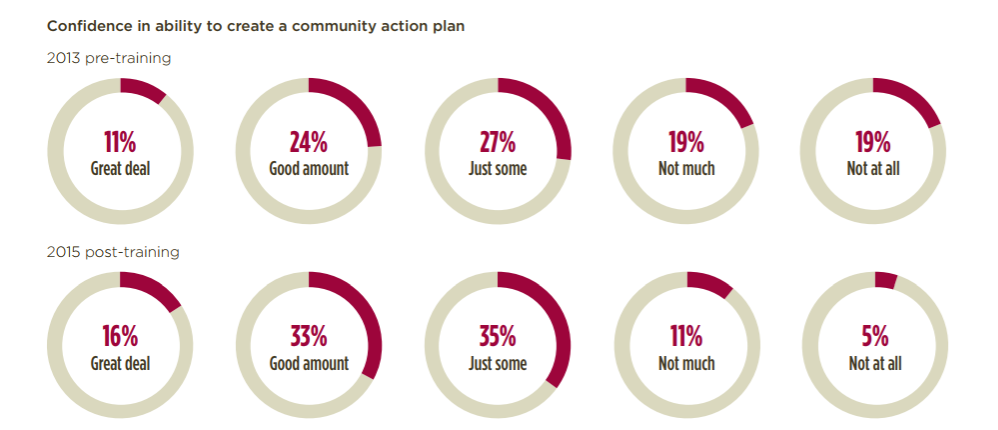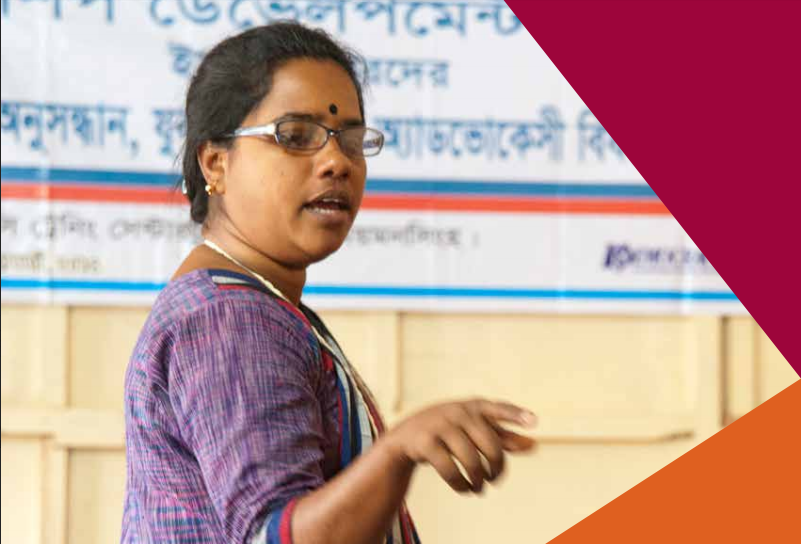Counterpart International recently completed a three-year leadership development project in Bangladesh (LDP) with 13,000 participants funded by USAID. Several conclusions from the Baseline Assessment (here) and the Impact Assessment Final Report (here) that are relevant to our Movement for Community-led Development are:
- Trainees’ knowledge and understanding of community development (Performance Monitoring Evaluation Plan #2) – a central goal of the LDP – achieved one of the largest positive changes. After training, leaders reported increased understanding of community development, as well as greater confidence in their ability to bring about change in their community. (p. 14)
- As with commitment to addressing development challenges, greater knowledge and understanding of democracy is associated with greater political and community engagement (PMEP #12). Training increased this sort of engagement, including the range of civic activities in which LDP leaders participate. (p. 14)

Graphic, p. 47
- The number of leaders who indicated that they were highly involved in organized efforts to improve their community increased by 11 points, albeit from only 26 to 37 percent. Participation in formal community development committees rose from 26 to 41 percent, and 54 percent of LDP participants said their participation in community projects had increased in the previous year, up from 39 percent before training (p. 16)
- Reflecting this greater participation, 54 percent of LDP participants said their participation in community projects increased over the previous year, up from 39 percent prior to training. (p. 53)

Graphic, p. 49
Counterpart International’s Bangladesh Leadership Development Program largely achieved it’s goals. There were marked increases in participants self-confidence to take on leadership roles within their communities as well as being more accepting to women and girls in non-traditional roles and leading community projects (p. 34). All graphics and figures from the Impact Assessment Final Report.


